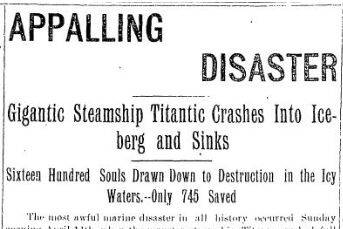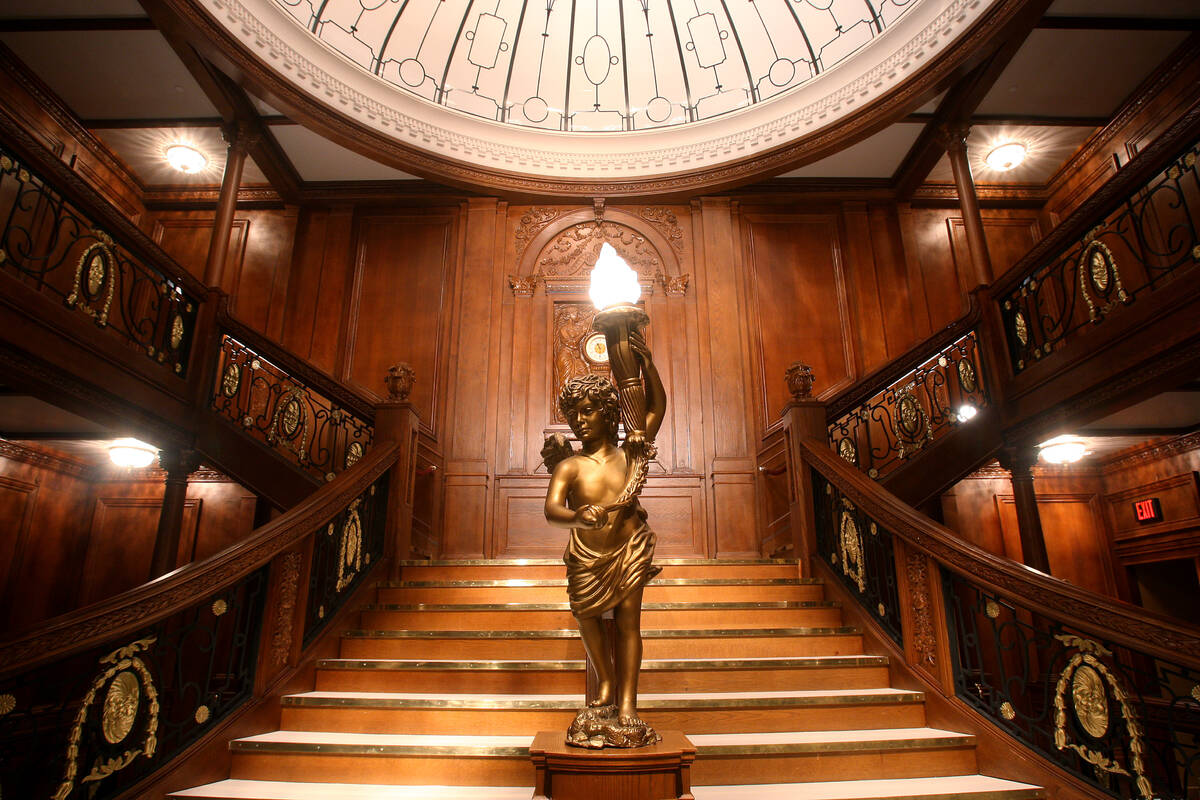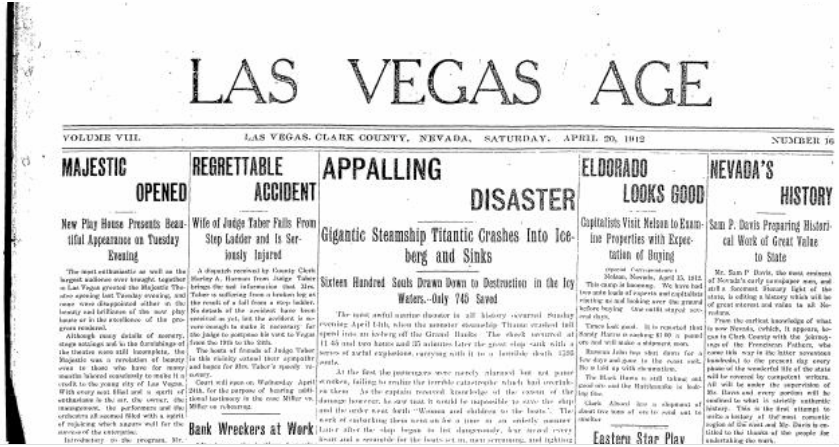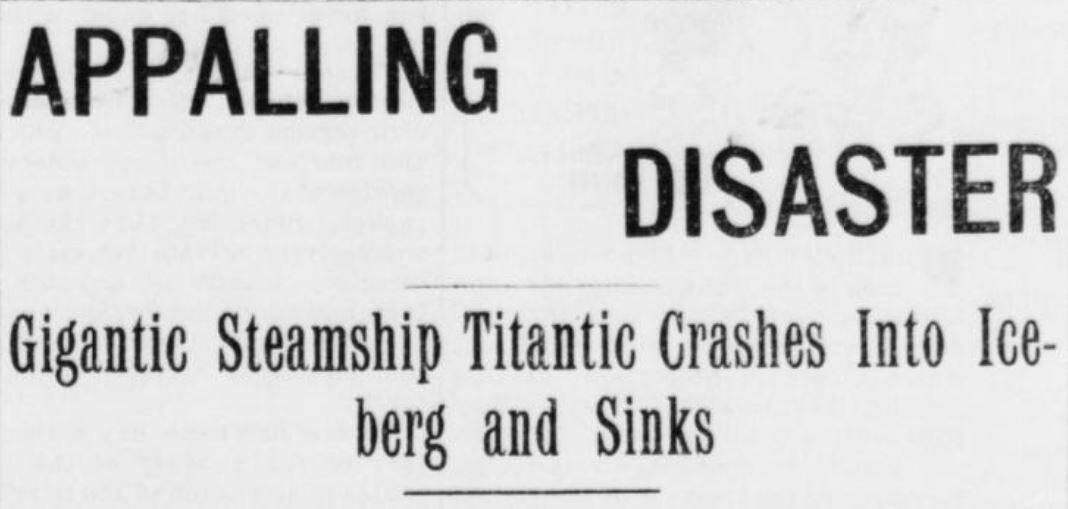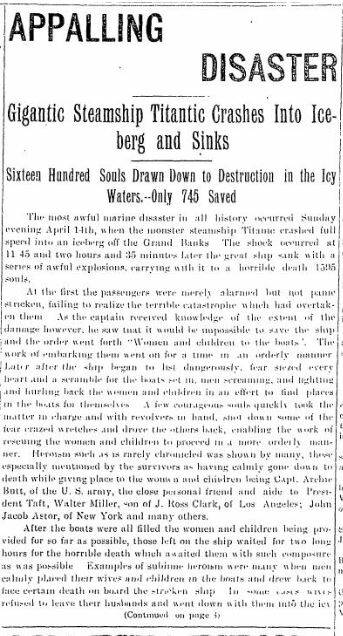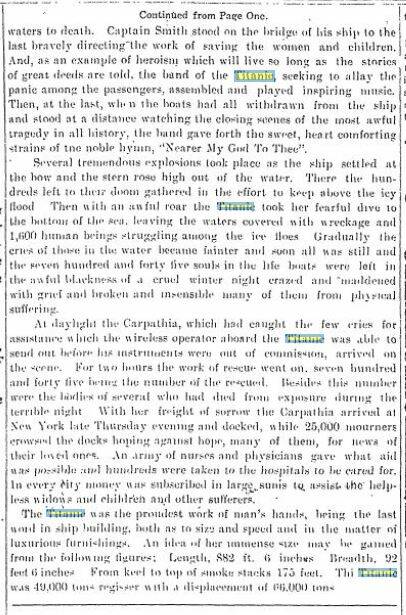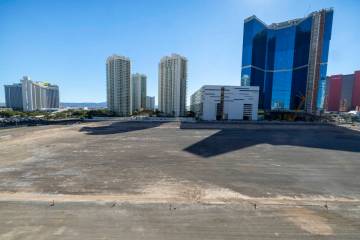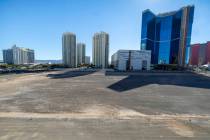The Titanic: How a Las Vegas newspaper reported the 1912 disaster
It was an “appalling disaster,” blared the headline on the front page of the April 20, 1912, Las Vegas Age newspaper.
The April 14, 1912, sinking of the Titanic made headlines around the world and right here in Las Vegas, which at the time was just a small settlement with a population of about 1,000, according to this joint Penn State University-Utah State University article on the history of water consumption in the Las Vegas Valley.
By comparison, the Titanic had more than 2,200 people on board, with 1,503 of them losing their lives.
At the time, Las Vegans were kept informed by Las Vegas Age, a newspaper that existed from 1905, the same year the city was established, until 1947, according to UNLV’s University Libraries, which maintains a complete run of the newspaper in digitized form.
In the spring of 1912, the sinking of the Titanic was the biggest story in the world. The tragedy of the unsinkable ship that slipped below the surface two hours and 35 minutes after hitting an iceberg in the Atlantic continues to intrigue to this day, particularly with the June 2023 implosion of the Titan submersible giving rise to a resurgence of interest in what has been called history’s most famous shipwreck.
When it happened, this is how Las Vegas residents read about it. These clippings from the Las Vegas Age show what Las Vegans saw when they first read about the story in the days after the Titanic went down.
This was the front page of the April 20, 1912, Age, which was the first edition of the newspaper published after the sinking:
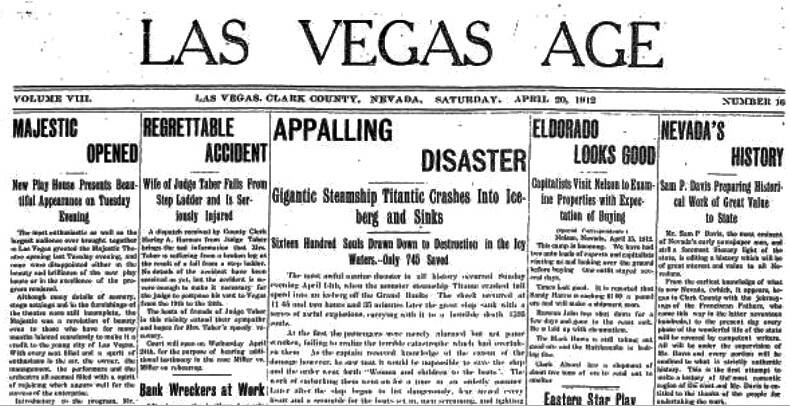
The text might be a little hard to read, but the story describes the sinking as the “most awful marine disaster in all history”:
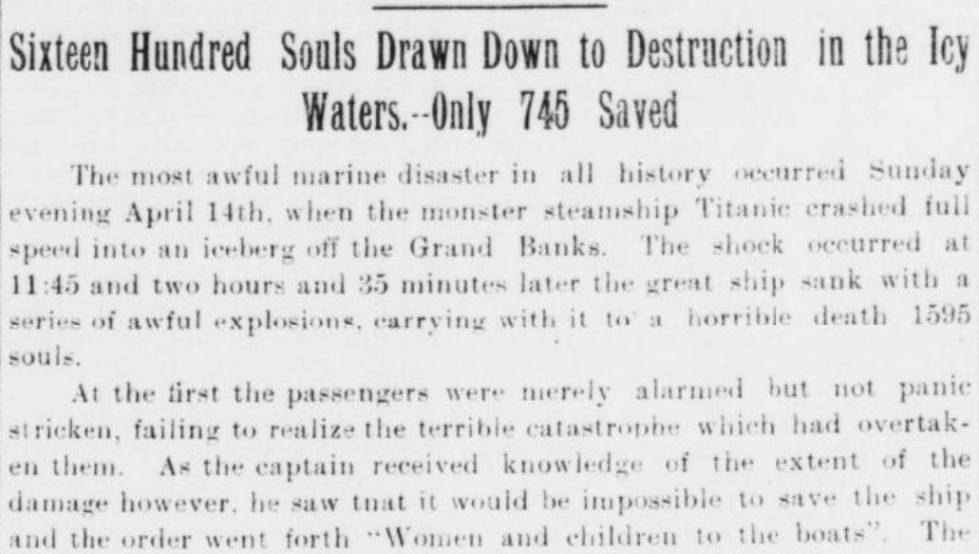
Another portion of this story reports on some of the men who were trying to board the lifeboats ahead of the women and children and who were kept at bay by other passengers and/or crew armed with revolvers. These men are referred to in the story as “fear crazed wretches”:
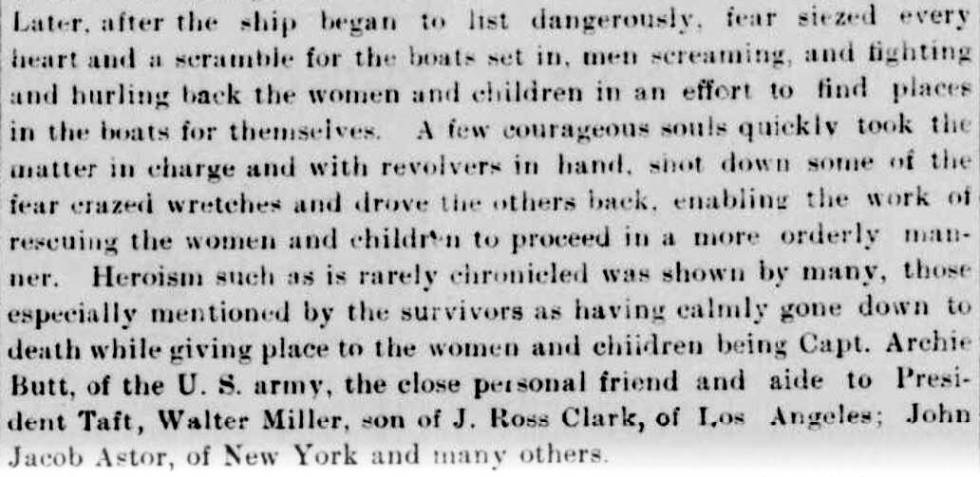
Inside the newspaper is also the nuts-and-bolts story giving the basic facts. The story is dated April 16, which is two days after the sinking:
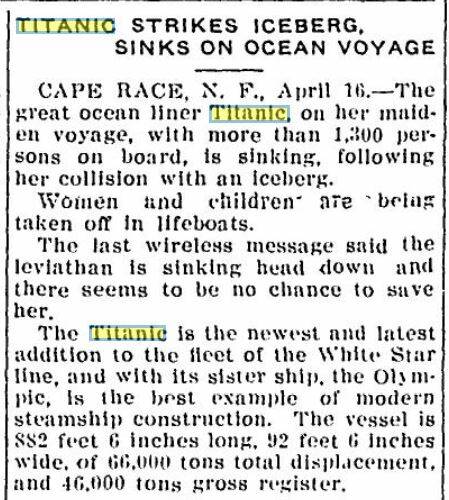
Then, in the days and weeks following, the Age would continue to publish stories touching upon the various angles of the disaster. Newspapers back then didn’t have a lot of visuals — photojournalism and the technology that made it possible were still a few years away — but the story was big enough to warrant the publication of this rendering of the ship in the April 27, 1912, edition:
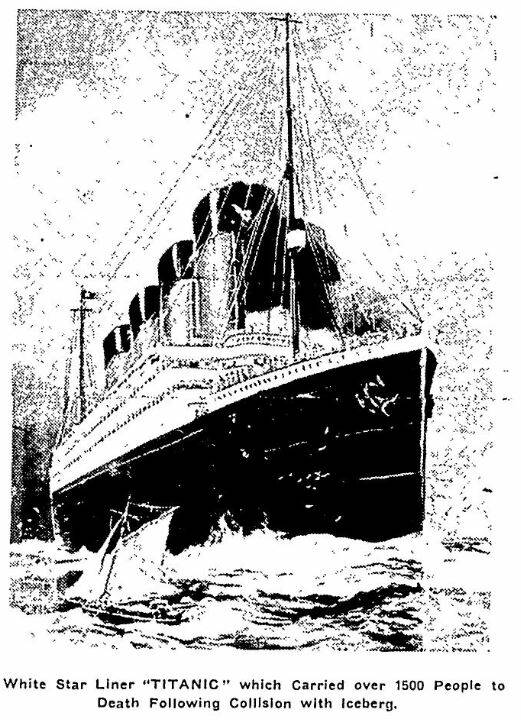
In the same edition was this story about about a shipbuilding expert weighing in on what wasn’t yet officially known: What part of the ship hit the iceberg?
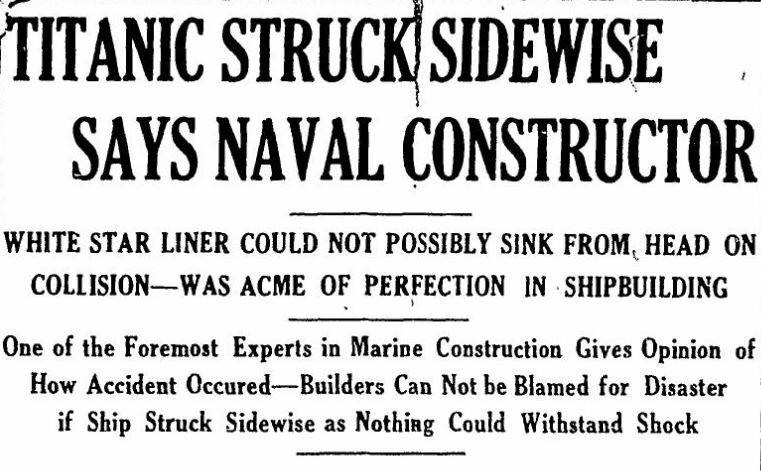
From this story, also in the April 27, 1912, edition of the Age, comes this poetic piece of prose:
“The long list of ships swallowed up in ocean’s mystic silences must owe the majority of its catastrophes to the peril of floating ice, against which man’s most powerful construction is but an eggshell.”
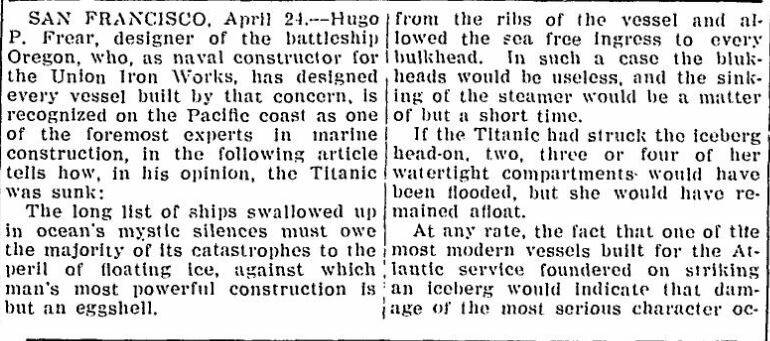
The story continues with more references to eggshells but also the speculation — which would turn out to be right — about how the doomed Titanic likely hit the iceberg with its side because a head-on collision would’ve been survivable:
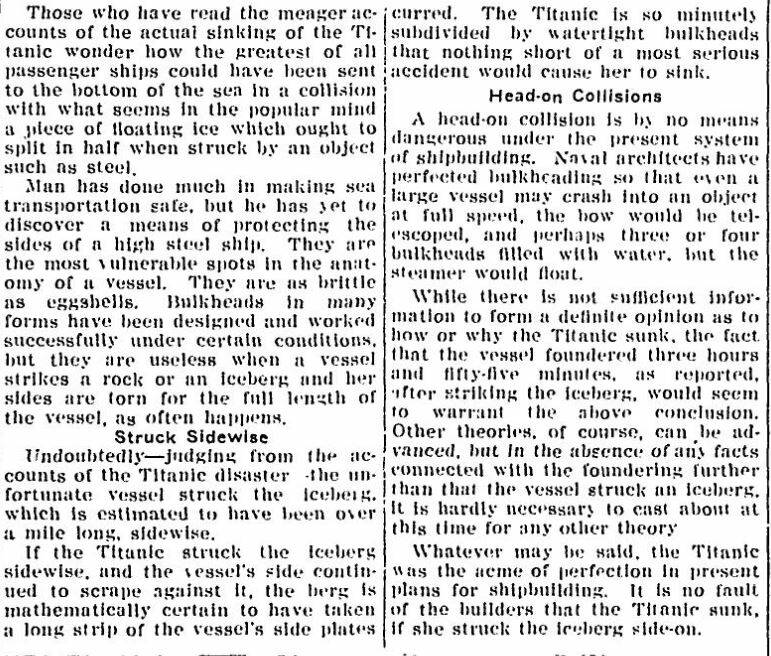
Another aspect of the story was the preceding winter being so brutally cold in Newfoundland and off the Canadian coast that no less than 20 boats had gone down in the few months before the Titanic joined them:
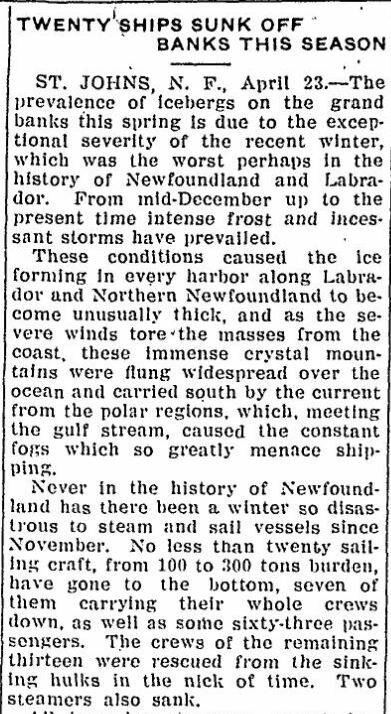
Other stories described the horror seen by a San Francisco doctor, who, despite being a man, was able to get on one of the lifeboats:
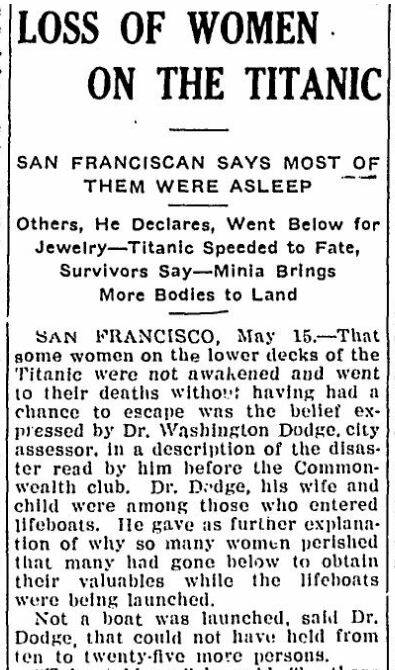
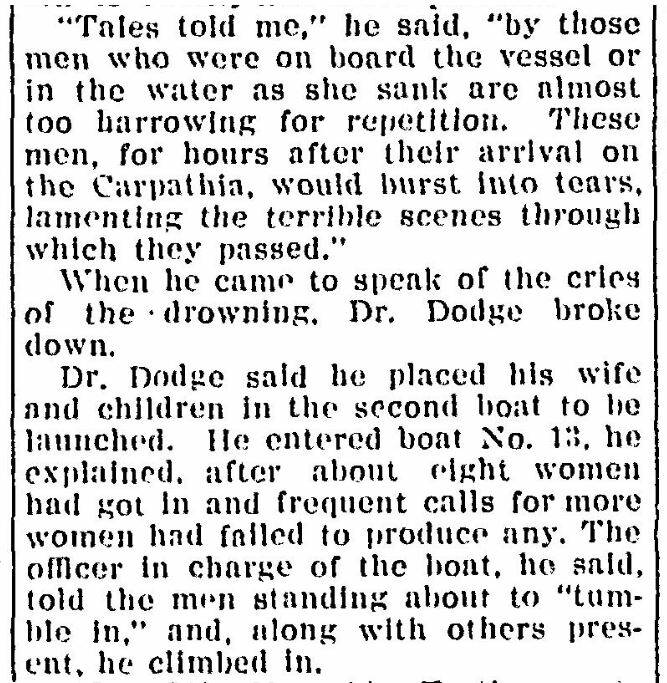
The retrieval of the bodies from the ocean surface near where the Titanic sank was also documented:
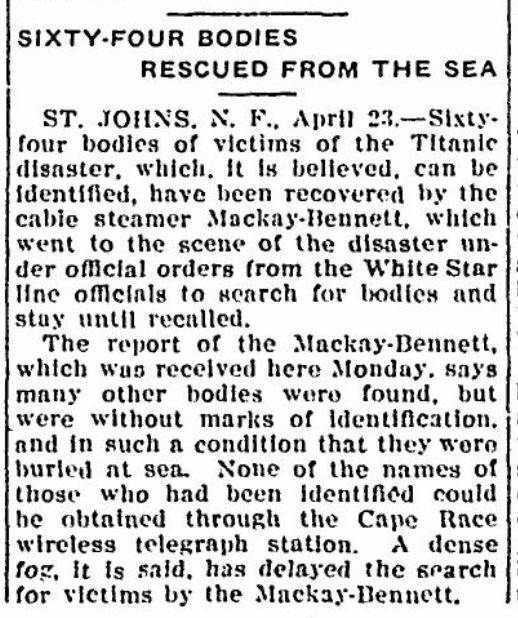
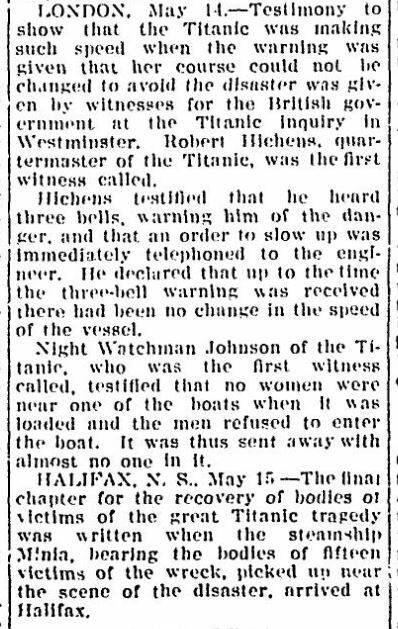
Another story from April 27, 1912, reported on a Titanic survivor who passed through Las Vegas on the way to her home in Los Angeles:
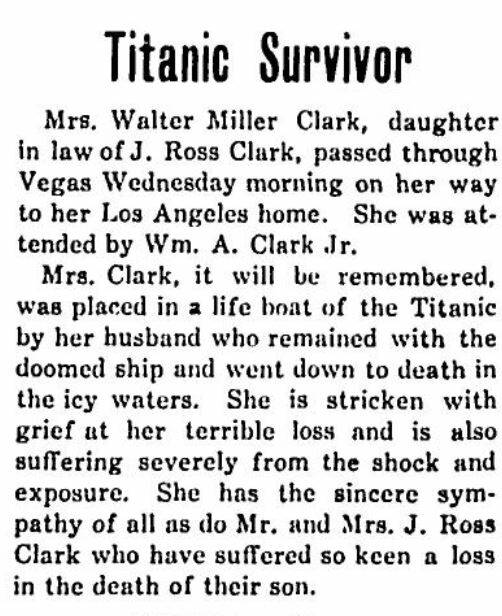
From then on, the Titanic itself would lay at the bottom of the ocean in darkness, never seen again (at least by human eyes), until September 1985, when a French-American team discovered the wreck of the boat lying in two pieces on the ocean floor about 12,500 feet below the surface. The story of the discovery made the front page of the Sept. 3, 1985, Las Vegas Review-Journal:
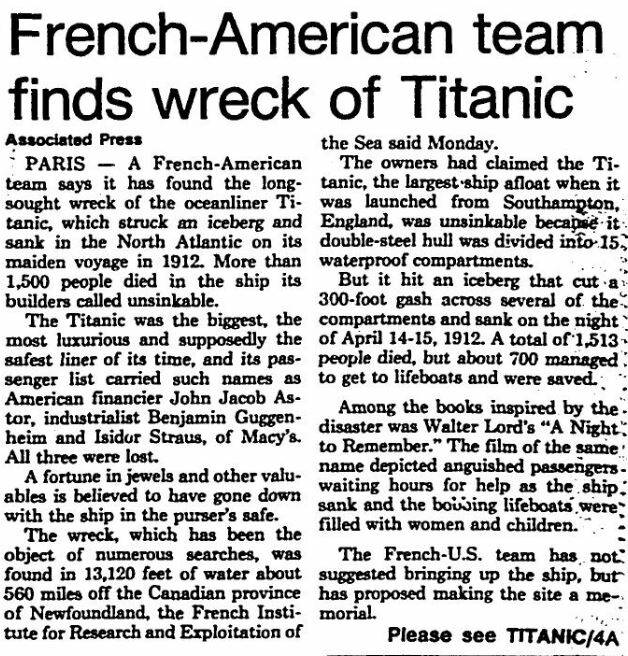
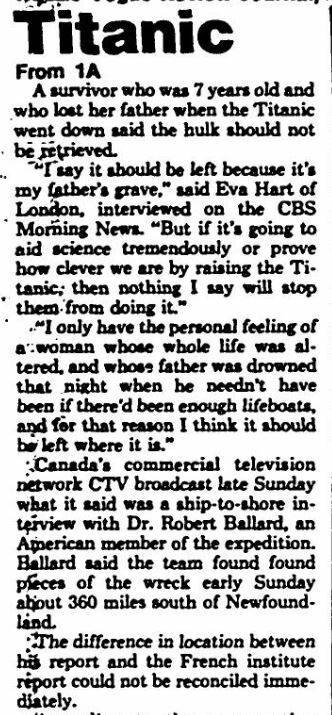
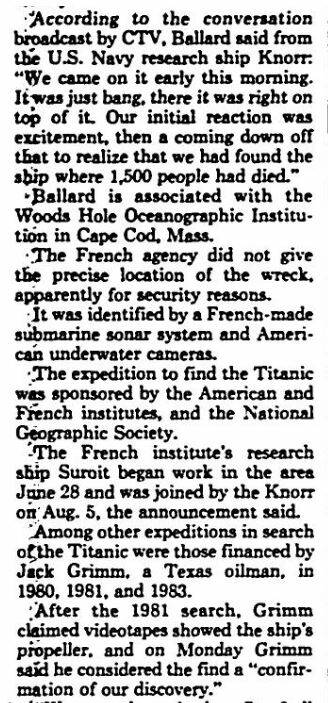
Of course, if you’re in Las Vegas and want to indulge your fascination with the Titanic, the Luxor continues to be the home of “Titanic: The Artifact Exhibition.” The exhibition features artifacts recovered from the wreck but also recreations of some of the ship’s interiors, including the famous Grand Staircase.
Contact Brett Clarkson at bclarkson@reviewjournal.com.



